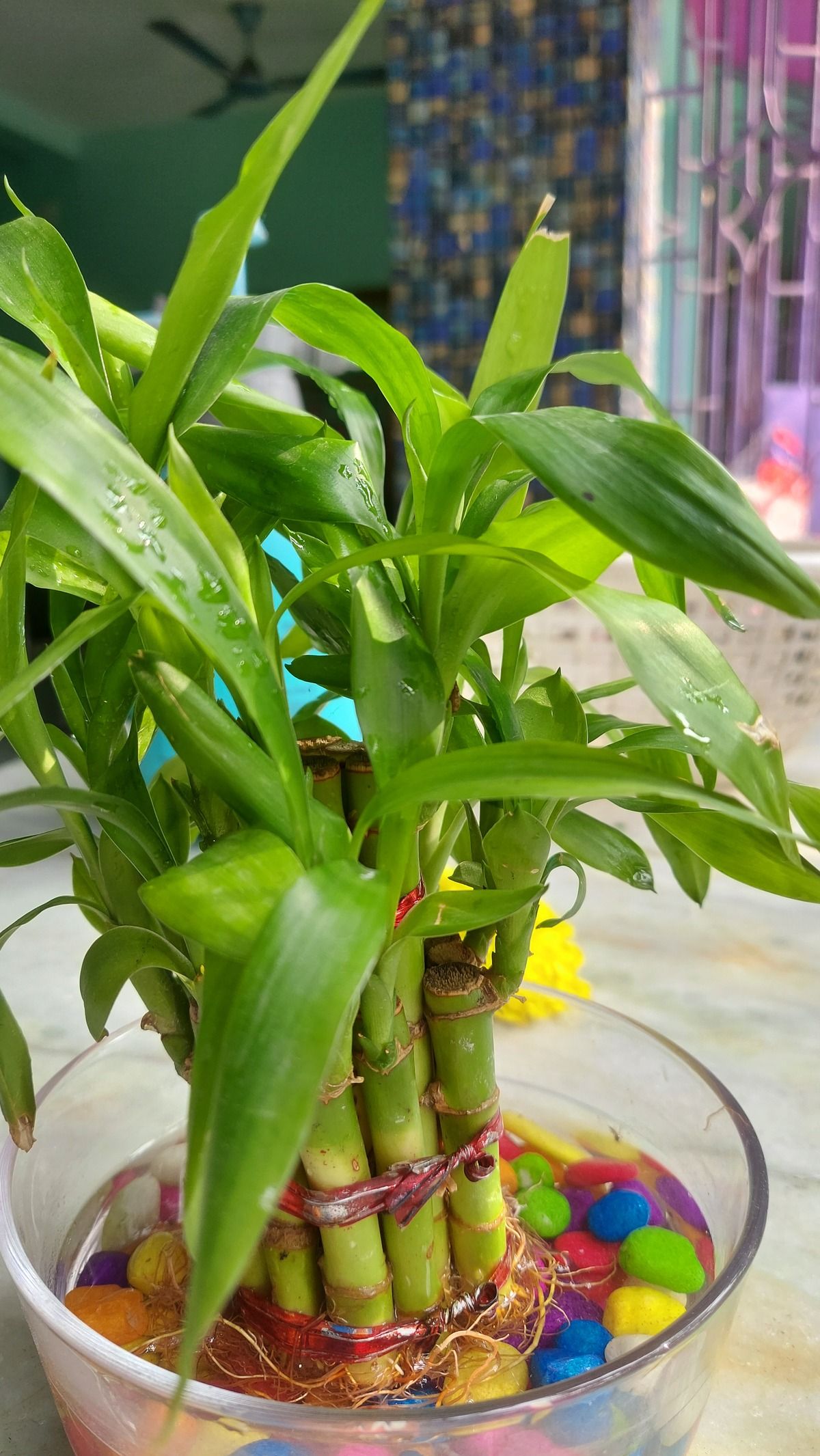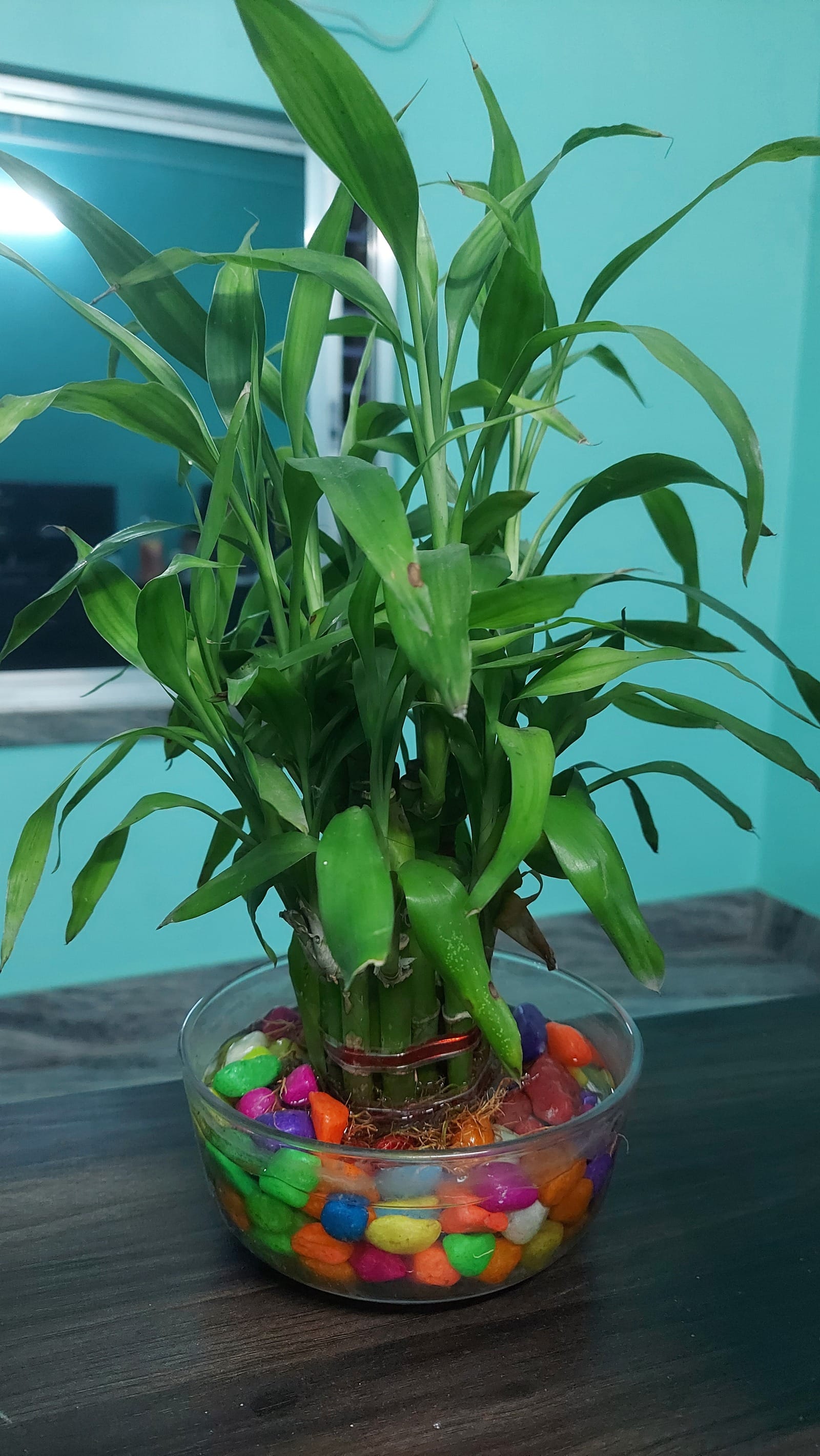
If you are looking for a small but durable indoor plant, Lucky Bamboo is a great choice. This versatile plant is perfect for anyone interested in enhancing their indoor plant collection. This small-sized plant is often considered a symbol of luck and prosperity which makes it a common gift.
If your lucky bamboo is turning yellow you can check this: Why my lucky bamboo is turning yellow - Tips to revive (gardenvive.com)
Understanding Lucky Bamboo
Lucky bamboo, scientifically known as Dracaena sanderiana. It is a popular houseplant that thrives either in water or soil. Although you can find "Bamboo" in its name, it actually belongs to the Asparagaceae family. Rooted in feng shui, an ancient Chinese philosophy, lucky bamboo is often gifted to symbolize good luck, prosperity, love, health, and growth, reflecting its deep cultural significance.
Optimal Growing Conditions for Lucky Bamboo
Lucky bamboo prospers indoors in warm environments with ample lighting. While outdoor planting is possible, it's vulnerable to cold temperatures and strong sunlight, which can be detrimental. Its adaptability to various light conditions makes it a favorite among indoor plant enthusiasts.
Below are some of the common solutions links for lucky bamboo:
Why my lucky bamboo is turning yellow - Tips to revive
Lucky Bamboo Tips Turning Brown - Causes and Solution
Lucky Bamboo Leaves turning Brown and damaged
Guidelines for Lucky Bamboo Maintenance

To ensure your lucky bamboo flourishes, follow these care tips:
1. Regular Container Maintenance: If your lucky bamboo is planted in water, it is important to clean the container every few months and change the water weekly to prevent algae buildup. This is crucial for maintaining a healthy environment for the plant.
2. Adequate Lighting: Lucky bamboo performs well in indirect sunlight or light shade, growing more robust in brighter environments. Avoid direct sunlight, but place it in a well-lit room for better growth.
3. Water Quality: If growing in water, use filtered or distilled water to maintain healthy roots and avoid tap water, which might contain harmful chemicals.
4. Suitable Container Selection: Lucky bamboo often comes in a specific container with pebbles or beads. If it outgrows this container, transfer it to a larger one. Carefully transfer the plant, ensuring the roots are covered with pebbles and the water level is appropriate.
5. Proper Soil Drainage: For soil-grown lucky bamboo, ensure the container has efficient drainage. The plant prefers moist soil but overwatering can be harmful. Water the soil when the top layer dries out.
Additional Care Tips for Lucky Bamboo
Beyond the basic care guidelines, here are some additional tips to keep your lucky bamboo in top condition:
6. Pruning and Shaping: Regular pruning can help maintain the desired shape and size of your lucky bamboo. Use sharp, clean scissors or pruning shears to trim away any yellow or dead leaves and to control its growth.
7. Fertilizing: Lucky bamboo doesn't require frequent fertilization. If you choose to fertilize, do so sparingly, using a diluted solution of a balanced liquid fertilizer every few months.
8. Avoiding Pests and Diseases: Lucky bamboo is relatively resistant to pests, but it can occasionally suffer from spider mites or aphids. Keep an eye out for these pests and treat them promptly with a mild insecticidal soap if they appear.
9. Managing Growth: Lucky bamboo can grow quite tall. If you prefer a shorter plant, you can cut the main stalk, and new shoots will typically emerge from below the cut.
Conclusion
Caring for lucky bamboo is a rewarding experience, as it brings both aesthetic beauty and a sense of tranquility to your home. By following these care tips and guidelines, you can ensure that your lucky bamboo remains a vibrant and thriving part of your indoor garden.
